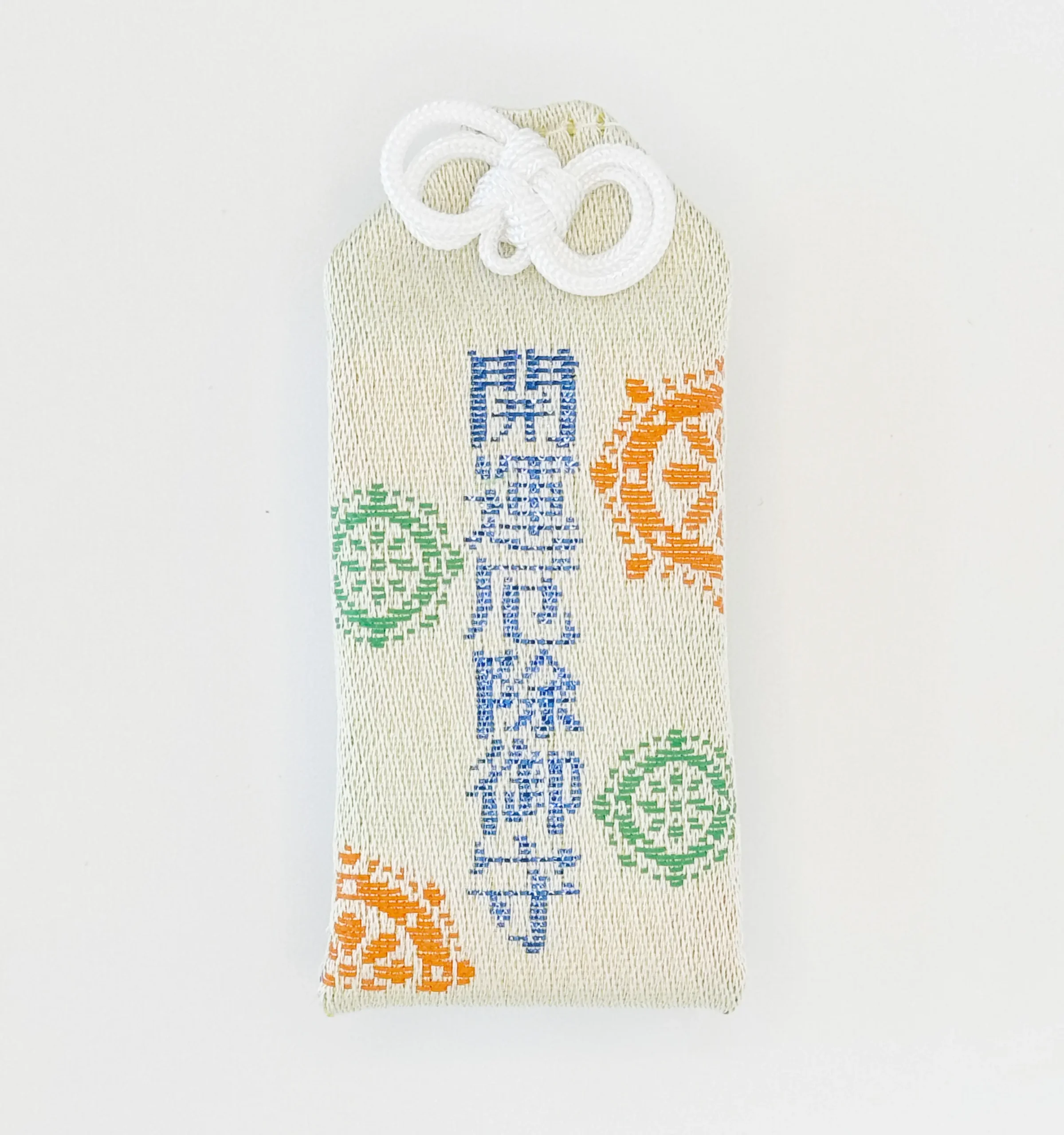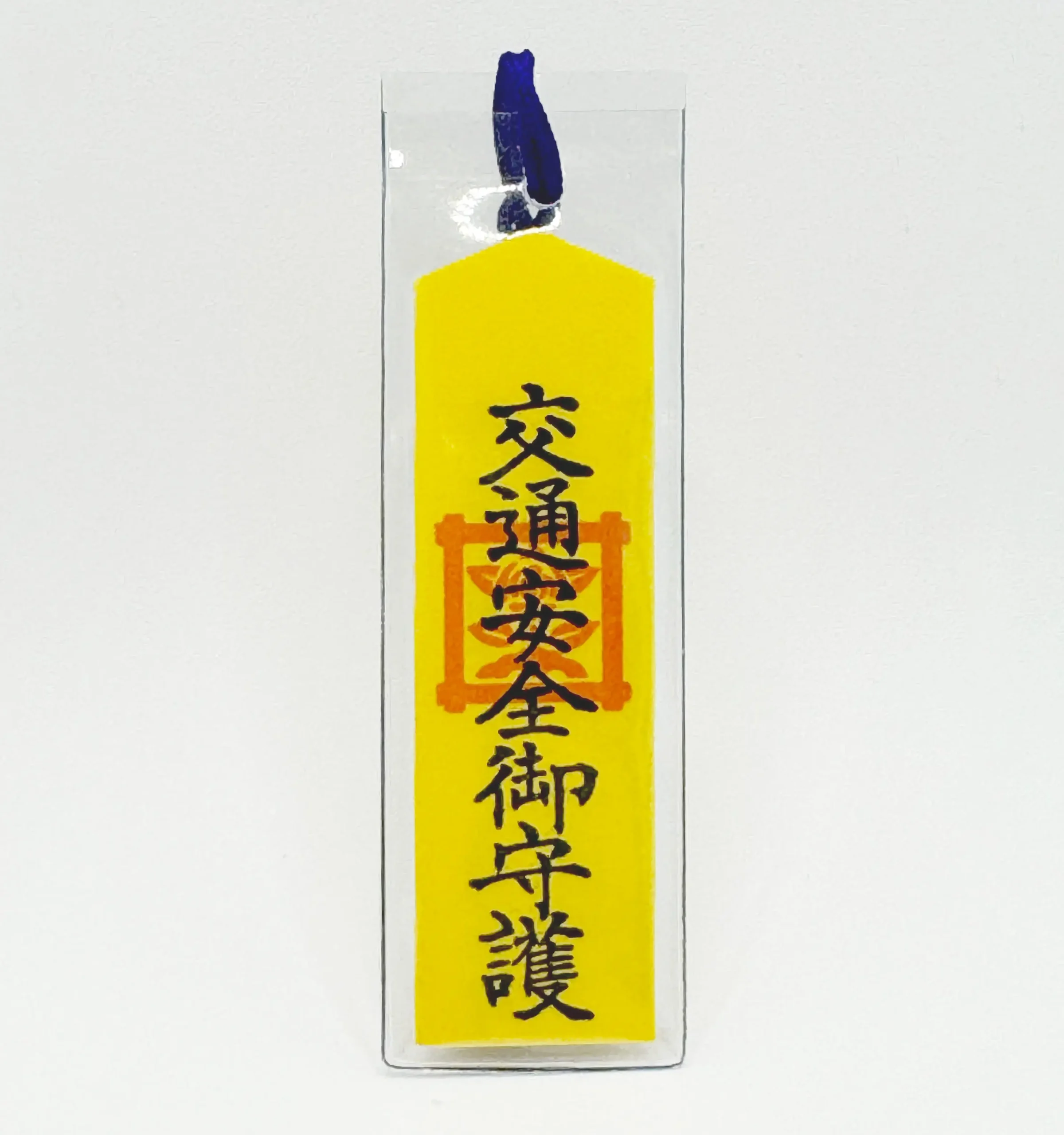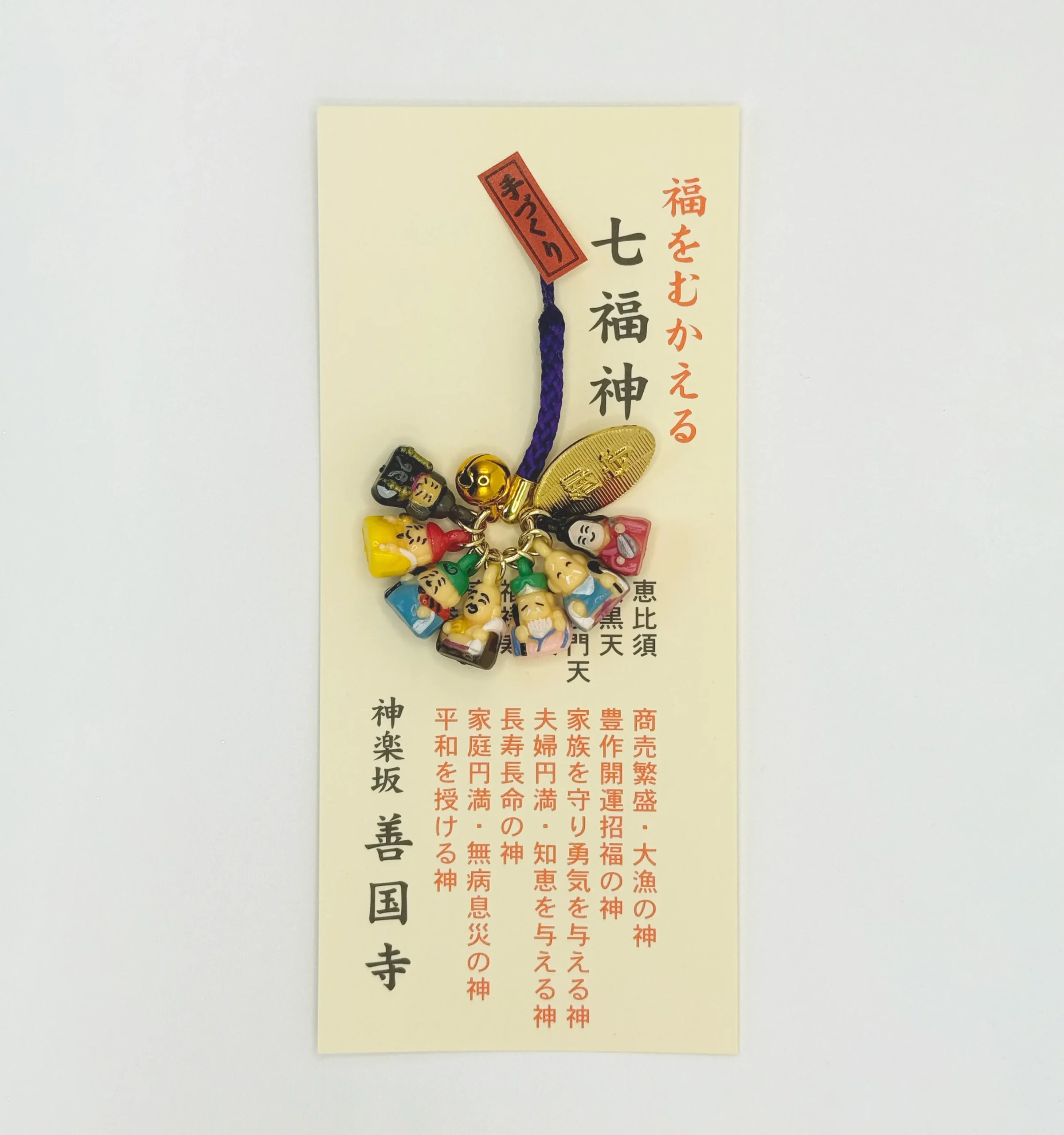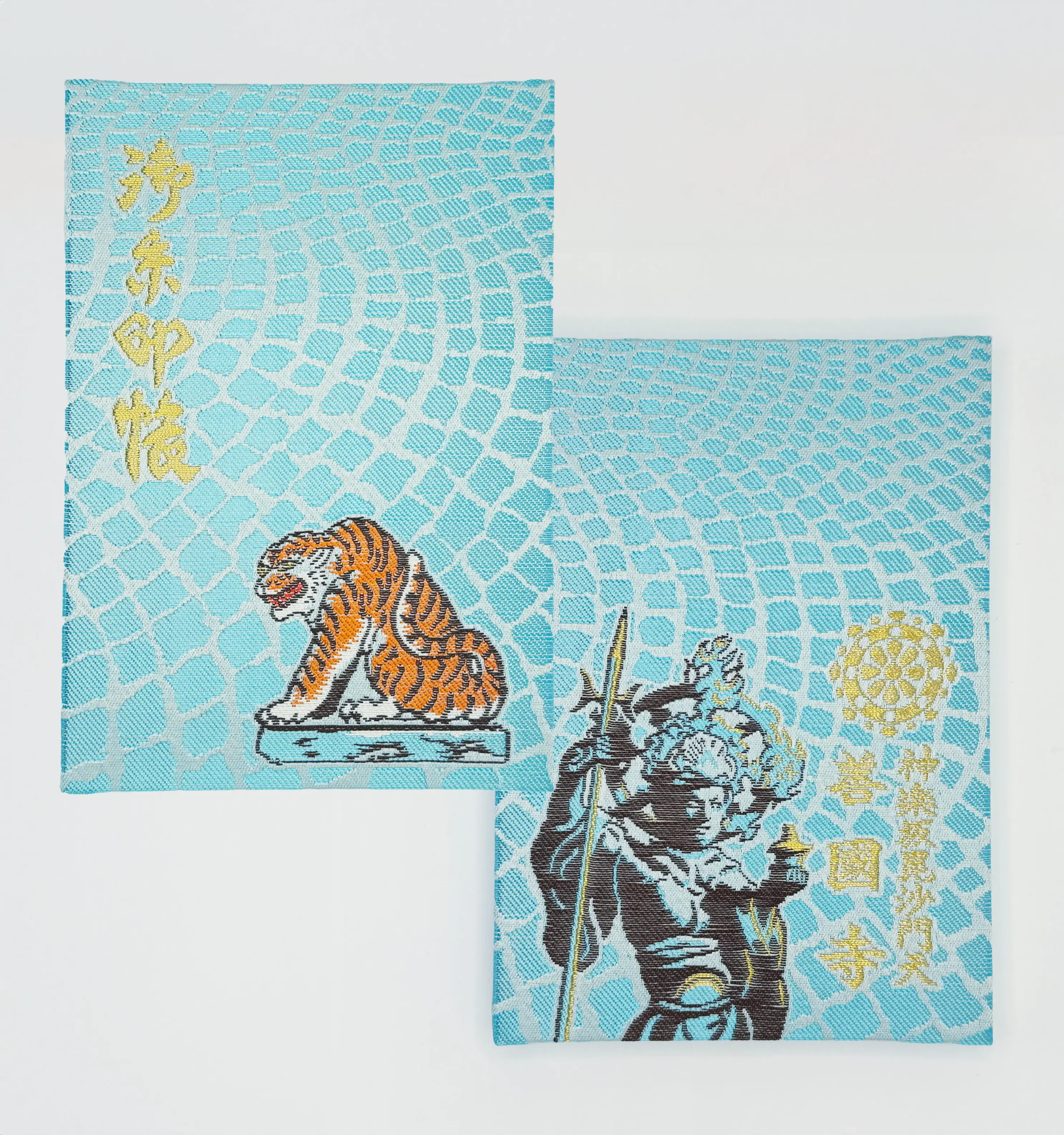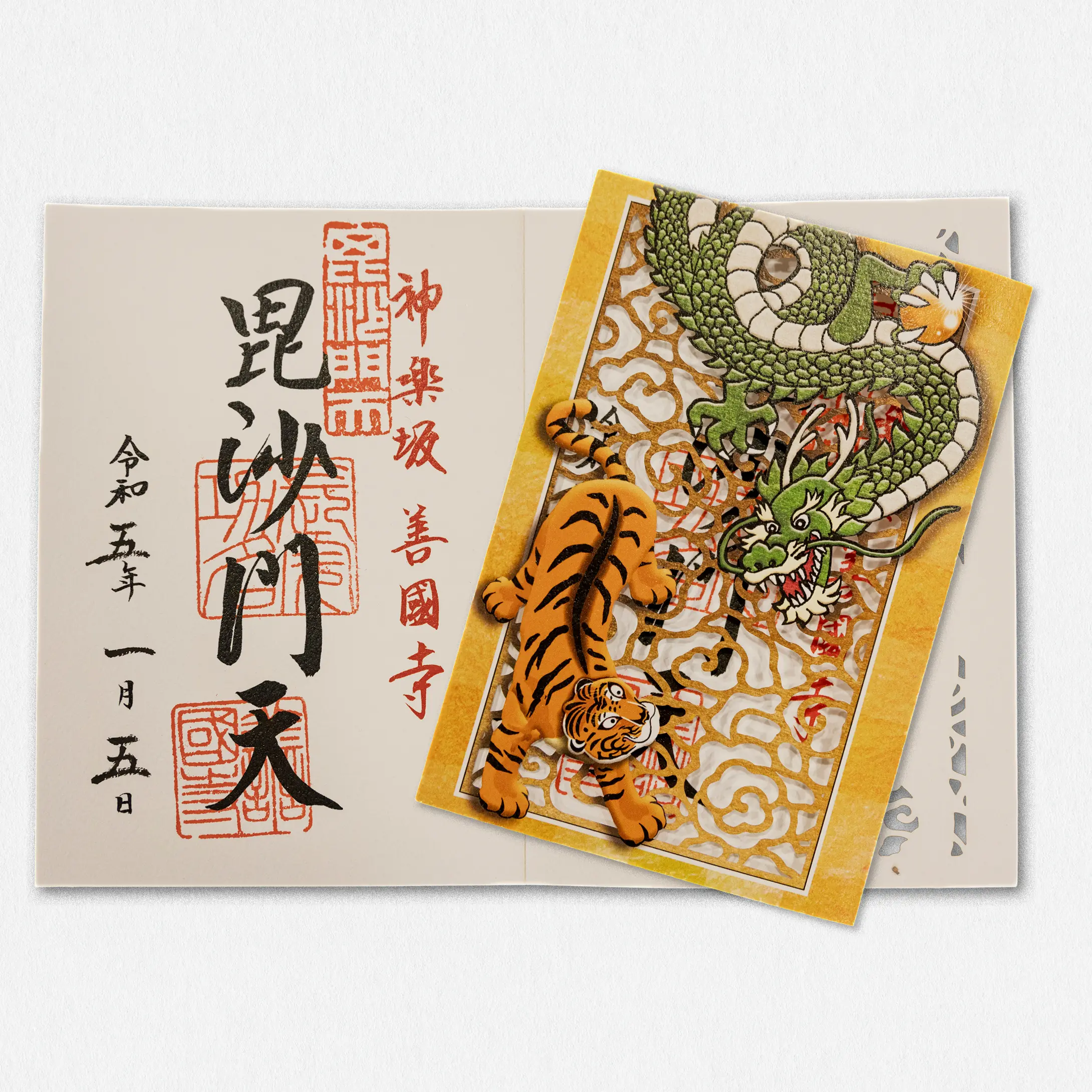善國寺は桃山時代末の文禄4年(1595年)に創設され、現在から約400年の歴史を誇ります。初代住職は佛乗院日惺上人であり、池上本門寺の十二代貫首を務めた経歴を持ちます。上人は二条関白昭実公の実子であり、徳川家康公とは父を通じて親交がありました。上人は京都での学びの後、本門寺貫首として迎えられ、天正18年(1590年)、家康公が江戸城に移った際に再会を果たしました。
Zenkoku-ji was founded in 1595 (Bunroku 4) at the end of the Momoyama period, boasting a history of about 400 years. The first head priest was Butsujo-in Nissei, who had served as the 12th head priest of Ikegami Honmon-ji. Nissei was the son of Nijo Kanpaku Akizane and had a connection with Tokugawa Ieyasu through his father. After studying in Kyoto, Nissei was welcomed as the head priest of Honmon-ji and reunited with Ieyasu when he moved to Edo Castle in 1590 (Tensho 18).
善國寺の成り立ち HISTORY & ORIGIN

誕生と現在まで THEN & NOW

そこで上人は、直ちに祖父伝来の毘沙門天像を前に天下泰平のご祈祷を修した。 それを伝え聞いた家康公は、上人に日本橋馬喰町馬場北の先に寺地を与えさらに鎮護国家の意を込めて、手ずから『鎮護山・善國寺』の山・寺号額をしたためて贈り、開基となられた。 ここに毘沙門天を奉安する、名刹・善國寺が誕生したのである。 徳川家の中で、法華経への信仰が厚いといえば、それは黄門様で有名な水戸光圀公である。 光圀公も、善國寺の毘沙門天様に信をお寄せになり、寛文10(1670)年に焼失した当山を麹町に移転し、立派に再建されたのである。 この縁由により、爾来当山は徳川ご本家、並びにご分家の三郷のうちの田安・一橋家の祈願所となったのである。 当山はその後も享保、寛政年間と類焼の厄にあい、殊に寛政4(1792)年の火事により、当、神楽坂へ移転してきた。 今から約二百年前のことである。 尚麹町の遺跡は、今の日本テレビ通り、麹町三丁目交差点の脇の歩道に建てられている黒御影の『善國寺谷跡』の石碑により、往時を偲ぶことができる。
毘沙門天様への信仰は時代とともに盛んになり、将軍家、旗本、大名へと広がり、江戸末期、特に文化・文政時代には庶民の尊崇の的ともなり、江戸の三毘沙門の随一として、《神楽坂毘沙門天》の威光は倍増していった。 当初は殆ど武家屋敷だけであった神楽坂界隈も、善國寺の移転に伴い、麹町より、よしず張りの店が九軒当寺の門前に移転するなど、除々に民家も増え、明治初期に花街も形成され、華やかな街になっていった。 明治・大正初期には、泉鏡花、尾崎紅葉、北原白秋など多くの文人・墨客達がこの辺りを闊歩し、大いに賑わった。 特に縁日の賑わいは相当なもので、人出のために車馬の往来が困難をきたし、山の手銀座と呼ばれるほど有名を馳せ、その混雑ぶりはまさに東京の縁日の発祥の地にふさわしいものであった。 昭和20年の東京大空襲は、首都を火の海と化し、当山も灰燼に帰するところとなった。 しかし、同26年には毘沙門堂を再建、46年には地元各位を始め、有縁の方々のご賛助により、威容を誇る本堂・毘沙門堂が完成し、戦災後の復興が果たされたのである。 毘沙門天は、インド出身の神様で、仏様、ないし仏法を守る役目を担い、四天王の随一として北方守護を司る。 また、多聞天とも号し、文字通り、参詣者の願い事を《多く聞いて》下さり、七福神のお一人として、日々福を授けて下さっている。


Upon their reunion, Nissei immediately performed a prayer for peace before the Bishamonten statue inherited from his grandfather. Hearing this, Ieyasu granted Nissei land north of Nihonbashi Bakurocho Baba for a temple. Ieyasu himself wrote and presented the temple name plaque “Chingo-zan Zenkoku-ji,” embodying the wish for national protection. Thus he become the temple’s founder.
Zenkoku-ji, enshrining Bishamonten, was thus established as a renowned temple. Among the Tokugawa family, Mito Mitsukuni, famous as “Komon-sama,” was known for his deep faith in the Lotus Sutra. Mitsukuni also had faith in Zenkoku-ji’s Bishamonten and rebuilt the temple magnificently in Kojimachi after it burned down in 1670 (Kanbun 10). Subsequently, Zenkoku-ji became a prayer site for the Tokugawa main family and two of its branch families, Tayasu and Hitotsubashi.
The temple suffered fires during the Kyoho and Kansei eras, particularly in 1792 (Kansei 4), leading to its relocation to the present-day Kagurazaka area. A stone monument marking the former site in Kojimachi can be found on the sidewalk near the Kojimachi 3-chome intersection on Nihon TV Street.
Faith in Bishamonten grew over time, spreading from the shogunate family to hatamoto and daimyo. By the late Edo period, especially during the Bunka and Bunsei eras, it became an object of reverence among common people. As one of the Three Bishamontens of Edo, the “Kagurazaka Bishamonten” doubled in prestige.
The Kagurazaka area, initially dominated by samurai residences, gradually became more populated with the temple’s relocation. Shops with reed blinds moved from Kojimachi to the temple gates, and by the early Meiji era, it developed into a flourishing entertainment district. In the early Meiji and Taisho eras, many literary figures like Izumi Kyoka, Ozaki Koyo, and Kitahara Hakushu frequented the area.
The temple festivals were particularly lively, with crowds making it difficult for horses vehicles to pass. As it became so famous, it was called “Yamanote’s Ginza,” embodying the birthplace of Tokyo’s temple festivals.
The Great Tokyo Air Raid of 1945 turned the capital into a sea of fire, reducing the temple to ashes. However, the Bishamonten Hall was rebuilt in 1951, and in 1971, with the support of local residents and devotees, the main hall and Bishamonten Hall were completed, achieving post-war reconstruction. Bishamonten, a deity of Indian origin, is tasked with protecting the Buddha and Buddhist law, guarding the northern direction as one of the Four Heavenly Kings. Also known as Tamonten, he literally “listens to many” prayers from visitors and, as one of the Seven Fortune Gods, bestows blessings daily.
お守り・お札
OMAMORI & OFUDA (Protective Charms & Tailsmans)
善國寺のお守り



御朱印

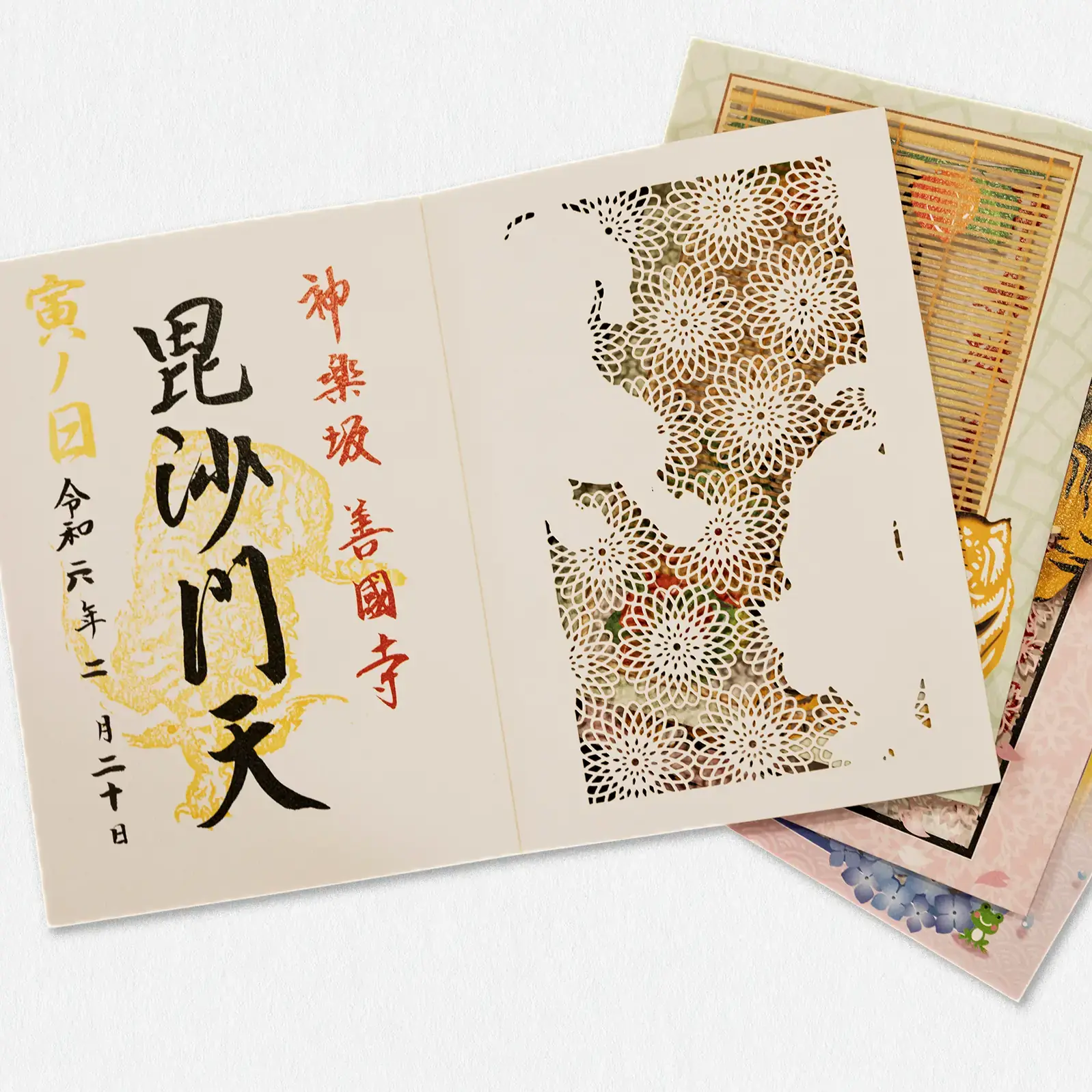
寺院風景 TEMPLE GROUNDS & SCENERY
神楽坂のシンボルである毘沙門天様を奉る善國寺は、徳川家康公ゆかりの寺院で、江戸三大毘沙門の一つです。約400年の歴史を持ち、江戸の繁栄と共に歩んできました。戦火を乗り越え、現在も多くの人々が参拝に訪れています。
Zenkoku-ji, enshrining Bishamonten, the symbol of Kagurazaka, is a temple associated with Tokugawa Ieyasu and one of the Three Great Bishamonten of Edo. With about 400 years of history, it has walked alongside Edo’s prosperity. Having survived the fires of war, it continues to welcome many visitors for worship today.





